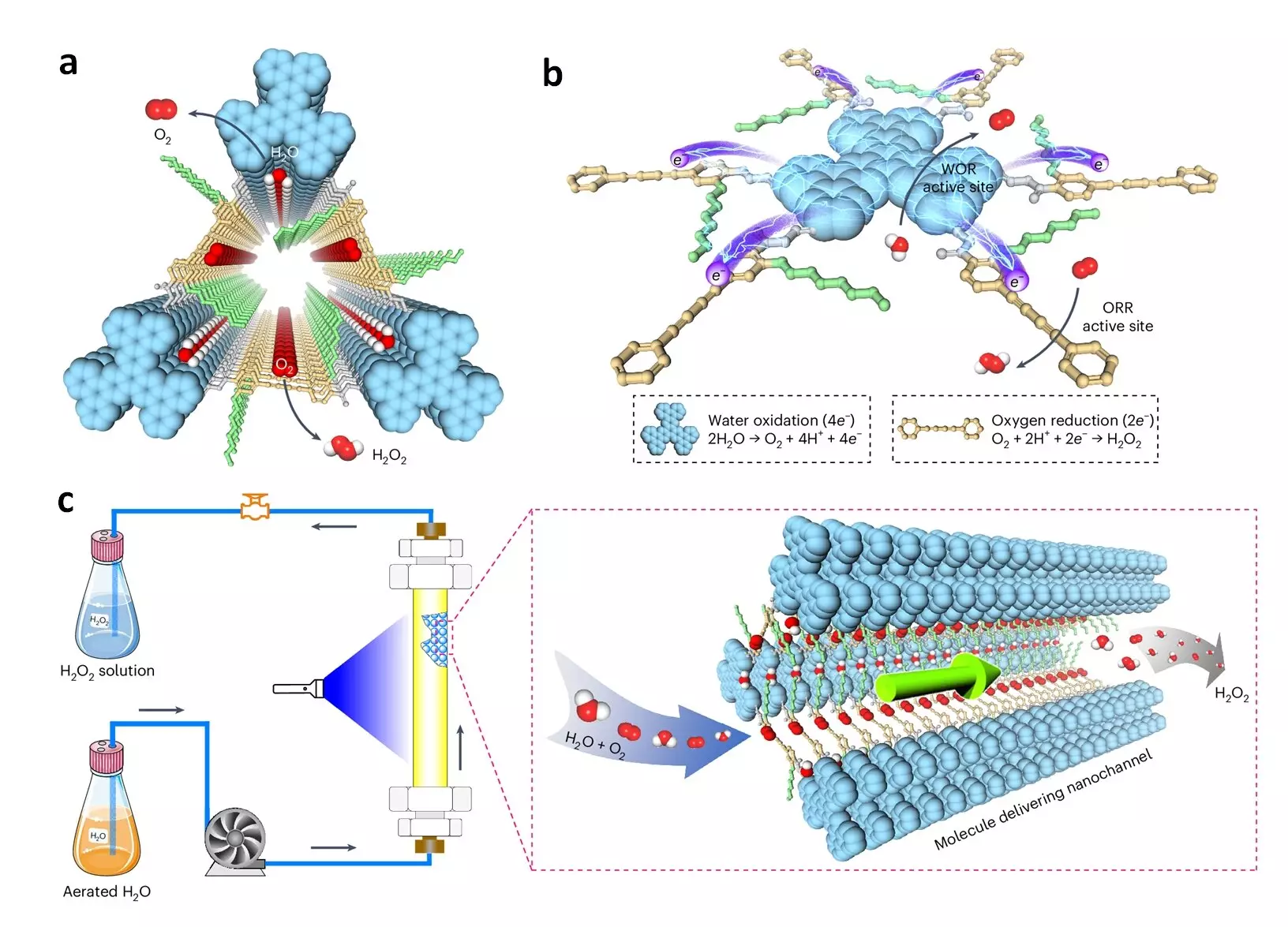Traditional methods of producing hydrogen peroxide (H2O2) have long been associated with high energy consumption, expensive catalysts, and hazardous solvents. However, a group of chemists from the National University of Singapore (NUS) have made a groundbreaking discovery by developing hexavalent photocatalytic covalent organic frameworks (COFs) that mimic natural photosynthesis to produce H2O2 efficiently and sustainably.
The artificial photosynthesis process for H2O2 production faces several challenges, including insufficient charge carrier generation, limited catalytic sites, and inefficient delivery of charges and reactants to the catalytic sites. These challenges have hindered the efficiency and productivity of the process, making it less viable for industrial applications.
Led by Professor Donglin Jiang, the research team at NUS devised a new strategy to overcome these challenges by developing hexavalent photocatalytic COFs through systematic design of the π skeletons and pores. These COFs, built from organic molecules linked by strong covalent bonds, possess inherent flexibility that makes them ideal for constructing efficient photocatalysts.
The researchers created a novel type of donor-acceptor framework photocatalysts that, upon irradiation, are transformed into catalytic scaffolds with dense catalytic sites for oxygen reduction and water oxidation. These photocatalysts exhibit spatially segregated donor and acceptor columns that prevent charge recombination and enable rapid charge transport, enhancing the overall efficiency of the process.
Moreover, the engineered pore walls of the photocatalytic COFs are designed to be hydrophilic, allowing for efficient transport of water and dissolved oxygen to the catalytic sites via capillary effect. This design ensures a steady flow of reactants to the catalytic sites, promoting a more rapid reaction kinetics.
Functioning as a photocatalyst for H2O2 production using only water, air, and light, the COFs have demonstrated remarkable performance metrics. These include a production rate of 7.2 mmol g⁻¹ h⁻¹, an optimal apparent quantum yield of 18.0%, and a solar-to-chemical conversion efficiency of 0.91% in bath reactors. Moreover, when integrated into flow reactors, the COFs sustainably produced over 15 liters of pure H2O2 solution under ambient conditions, showcasing their operational stability over a two-week period.
The development of hexavalent photocatalytic COFs for hydrogen peroxide production marks a significant advancement in the field of artificial photosynthesis. By addressing key challenges and optimizing the design of the COFs, the research team at NUS has paved the way for a more sustainable and efficient method of producing H2O2, with promising implications for industrial applications. Prof. Jiang’s work represents the culmination of years of dedication and innovation in the field of COFs, highlighting the transformative potential of this technology for the future.


Leave a Reply